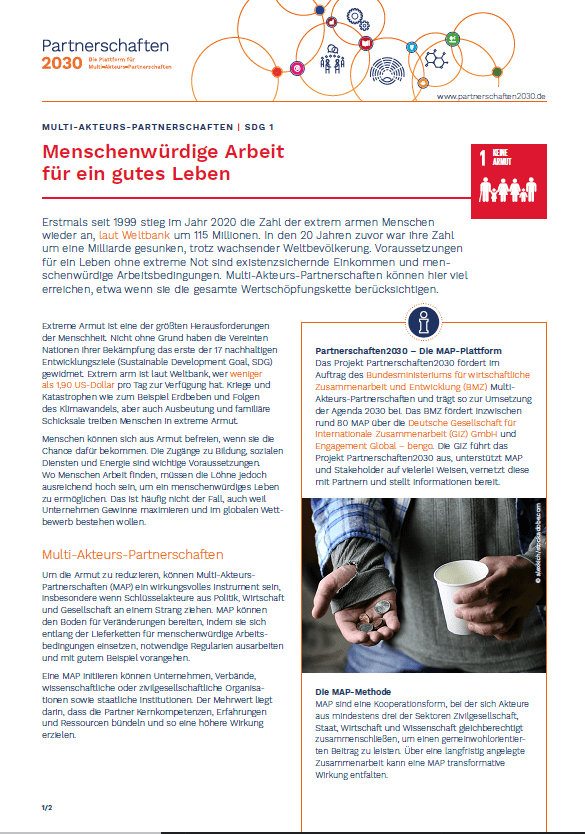Partnerships 2030: Factsheets on the SDGs
Partnerships 2030: Factsheets on the SDGs
How do multi-actor partnerships (MAPs) contribute to the successful implementation of the 2030 Agenda? In a factsheet series Partnerships2030 address this issue. For each of the Sustainable Development Goals (SDGs) 1 to 16, two pages describe the advantages of a MAP to address major and complex challenges. This is illustrated by the example of a MAP working on one of the SDGs.
For the first time since 1999, the number of extremely poor people rose again in 2020, by 115 million according to the World Bank. In the previous 20 years, their number had fallen by one billion, despite a growing world population. The prerequisites for a life without extreme hardship are living incomes and decent working conditions. Multi-actor partnerships (MAP) can achieve a lot here, for example if they take the entire value chain into account.
With the aim of improving social and environmental conditions in global textile value chains, the work of the Textile Alliance also contributes to the achievement of the SDGs (SDG-Mapping). In the Factsheet about SDG1 the Textile Partnership is mentioned as an example-MAP.



